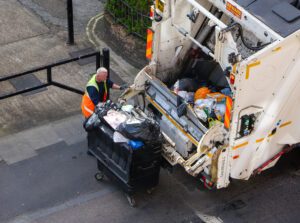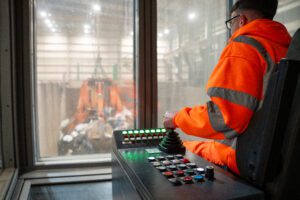Collaboration across the value chain is key to overcoming the “multi-faceted” challenges of increasing packaging recycling rates, according to expert panellists on RWM’s Packaging and EPR stage.
ESA’s Head of Recycling Policy, Patrick Brighty, was among those participating in a debate on Day One of RWM entitled Brands vs Recyclers: Can collaboration save the day? – which discussed the “missteps” that had been made in addressing waste issues, particularly for plastic packaging, and how these can be overcome.
Asked by the Chair of the discussion, CIWM President Tim Walker, what missteps had been made by brands and retailers in address plastic waste, Patrick said he had “sympathy” for the multi-faceted challenge brands face from consumer pressure; regulatory change; protecting against perishability and embedding design for recyclability and re-use into their packaging.
Patrick said: “But probably the main misstep we’ve seen is brands and retailers jumping the gun while we’ve waited for more clarity on collection and packaging forms, particularly around fee modulation.
We’ve seen some well-intentioned but flawed shifts away from packaging that is widely recycled to formats that are more challenging – for example from glass containers to mixed paper/plastic ones, which are harder to recycle in the current system and end up having a greater lifecycle impact. Hopefully with the reforms soon to be implemented we should have clear incentives that encourage better eco-design for packaging.”
Others on the panel, including Roger Wright from Biffa, suggested that a desire among brands to retain exclusivity on packaging innovations, rather than collaborating with others, prevented solutions for being scaled up which made them too expensive – but that there could be a role for waste management companies to play “matchmaker” between brands and retailers.
John Dawson-Nowak from consultancy WSP said he didn’t think enough organisations were sharing data at all points in the supply chain and that, while there was good data on materials entering and exiting the supply chain, there wasn’t enough in the middle.
He said that producers see packaging as part of their brand image and are hesitant to make changes, but simplifying choices around colours and polymers for certain use cases would be beneficial. John also suggested adding technology such as QR codes or RFID tags to packaging to create a much more granular understanding of what’s happening to it between the point it is placed on the market and returned as secondary materials.
Asked by Tim Walker what brands, retailers and recyclers can do to collaborate more effectively, Patrick Brighty said: “Everyone needs to pull their weight in their individual areas. Embedding recycling in design from the outset is important by asking can it be collected at scale? Can it be sorted without causing contamination? Does it align with the market?
Beyond this, local authorities and our sector need to make the right collection choices and deliver effective services to achieve the right outcomes. The EPR scheme administrator and/or local authorities will also have a key behaviour-change role in an effort to shift people from being ‘consumers’ to becoming ‘citizens’ who have an active participatory role in delivering good environmental outcomes.”
Summarising the current situation, Patrick said that there were three main factors constraining recycling performance – a lack of “push measures” stimulating collection of recyclate; a lack of demand-side “pull” drivers for recycled material; and policy uncertainty.
He said: “There has been a long period of time that investments have been frozen while we await the necessary conditions to unlock them. Implementation of Extended Producer Responsibility and the wider Resources and Waste Strategy reforms should deal with the push factors and end the uncertainty.”
“Where EPR in its current form falls short is that it doesn’t do much for the demand side pull factors – whereas the obvious policy lever to help this is an escalator on the Plastic Packaging Tax to insulate demand for recyclate from fluctuations in oil prices, as well as stimulate demand for lower value plastics, like films, from 2027. This needs to be implemented carefully alongside other measures like ending self-certification of imported recyclate, which undercuts domestic production. We also need to look at what’s been done in the EU to open up novel applications for plastic polymers.”
A member of the audience asked panellists what they thought of brands investing in recycling infrastructure.
Patrick said: “EPR obligated producers will take on the day-to-day running costs for household packaging waste, but the expectation is that the waste sector will provide infrastructure investment, particularly during the transition period between 2025 and 2027. Once local authorities get clarity on their EPR funding they will be able to green-light contractors to make big investments.”




